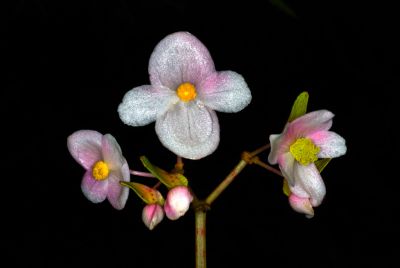Begonia palmata: Difference between revisions
No edit summary |
(→Photos) |
||
| (4 intermediate revisions by the same user not shown) | |||
| Line 54: | Line 54: | ||
=== Photos === | === Photos === | ||
<gallery widths= | <gallery widths=400px heights=400px mode="nolines" > | ||
File:BegoniapalmataTaiwan.png|Begonia palmata from Taiwan | File:BegoniapalmataTaiwan.png|Begonia palmata from Taiwan | ||
File:Begoniapalmatavietnam.png|Begonia palmata from Vietnam | File:Begoniapalmatavietnam.png|Begonia palmata from Vietnam | ||
File:BegoniapalmataForestHerbariumBKFthailand.jpg|Begonia palmata Thailand Forest Herbarium BKF | File:BegoniapalmataForestHerbariumBKFthailand.jpg|Begonia palmata Thailand Forest Herbarium BKF | ||
File:BegoniapalmataForestHerbariumBKF.jpg|Begonia palmata Flowers Thailand Forest Herbarium BKF | |||
</gallery> | </gallery> | ||
Latest revision as of 11:28, 30 October 2023
| Species | Begonia palmata |
|---|---|
| Region | Asia |
| Country | Through Out Asia |
| Year published | 1825 (Don) |
| Date of Origin | |
| Plant Type | Rhizomatous |
| Section | Platycentrum |
| Chr 2n | 30 |
Species Information[edit]
Classification and Distribution[edit]
Begonia palmata is a widespread species found throughout eastern Asia, including Northeast India, China, Nepal, Sikkim, Bhutan, Bangladesh, Myanmar, Thailand, Laos, and Vietnam. It is typically found at elevations of 200–2150 meters.
Habitat[edit]
Begonia palmata is a shade-loving plant that prefers moist, well-drained soil. It is often found in association with streams and rivers.
Characteristics[edit]
Rhizomatous, erect, monoecious herb, 45–100 cm high. Leaves are narrowly to broadly ovate, to almost orbicular, with a base that is truncate or cordate. The upper surface of the leaves is green, sometimes with pale ring marking, and the underside is green or reddish.
Flower Details[edit]
The inflorescence is cymose, axillary to terminal, with 2–6 female and 2–6 male flowers. Male flowers have 4 tepals, and the androecium has 40–80 stamens. Female flowers have 5 equal tepals and an ovary that is 2-locular.
Etymology[edit]
The specific epithet "palmata" refers to the palmate leaves of this species.
Comparison to Similar Species[edit]
Begonia palmata is similar to Begonia longifolia, but can be distinguished by its palmate leaves and white or pink flowers. Begonia longifolia has lobed leaves and yellow flowers.
References[edit]
Prodromus Florae Nepalensis (Don 1825), Flora Indica (Roxburgh 1832), and various other publications.
Photos[edit]
External Links[edit]
Links to pages related to this species



